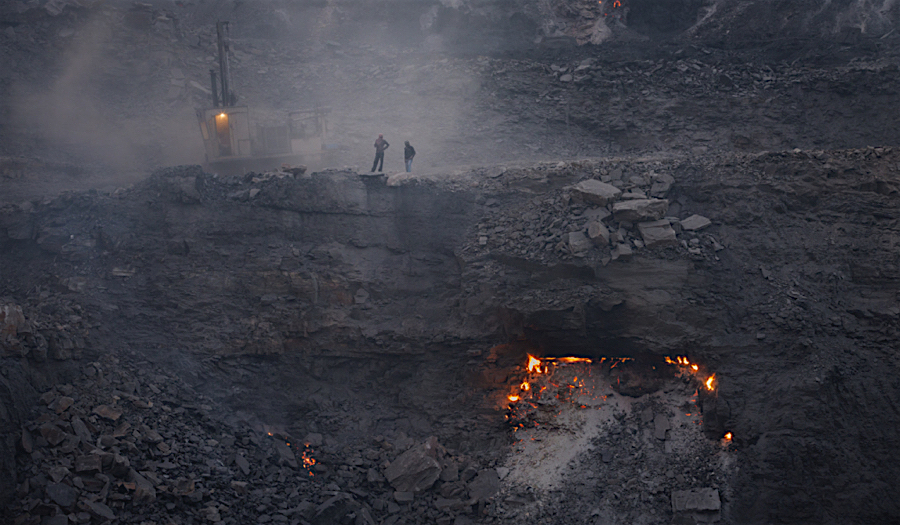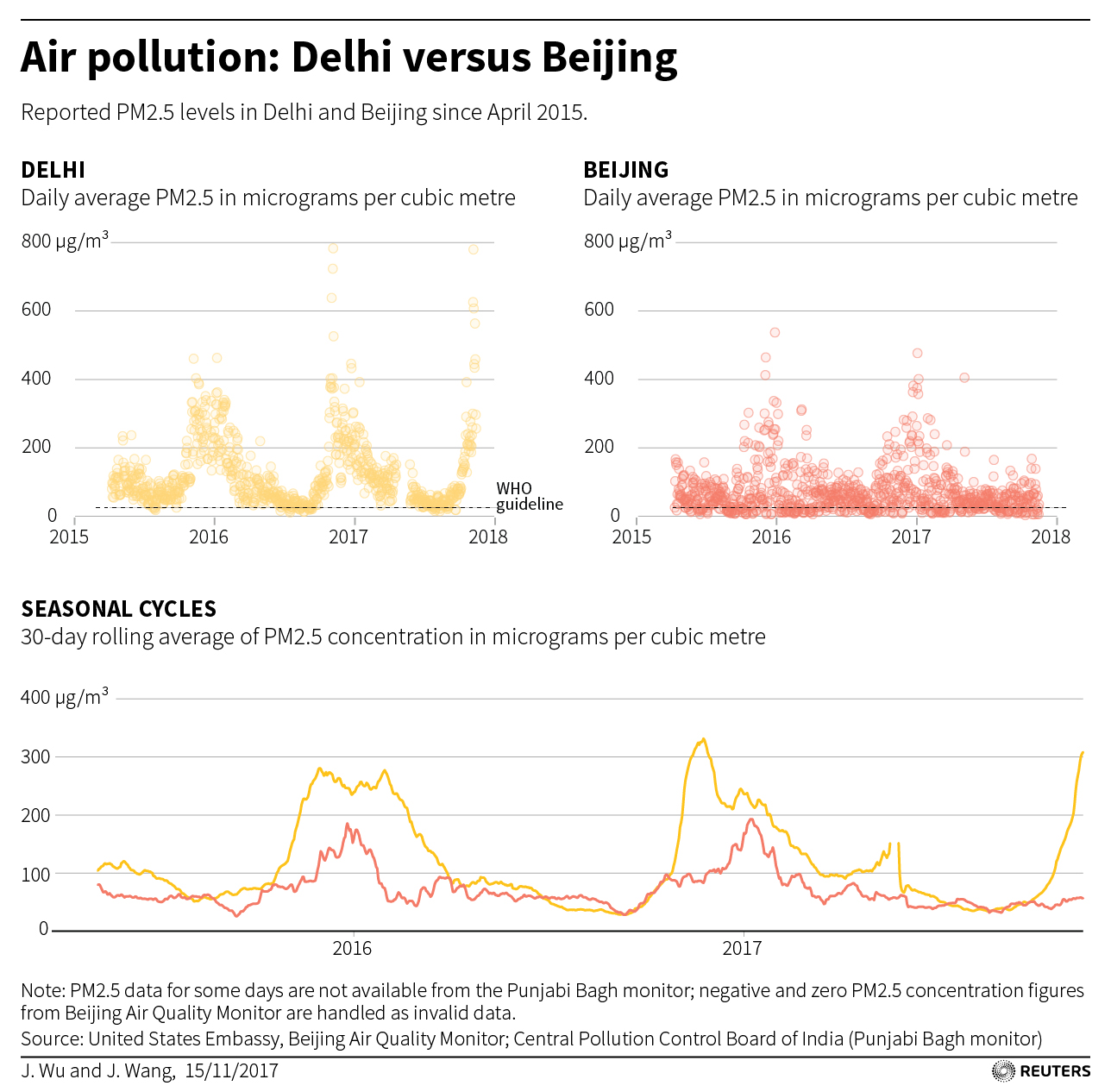Burning more coal to cut pollution – India’s distressing dilemma: Russell

When burning more coal becomes your solution to pollution choking your capital city, it really is time to reassess your policy positions.
India’s New Delhi banned the burning of petroleum coke on Nov. 1, part of measures aimed at curbing air pollution, which last week reached 10 times the recommended limits.
Petroleum coke, known as petcoke, is a by-product of oil refining and contains more energy per kilogramme than most types of mineral coal. In India it’s mainly used in industrial processes, such as making dyes.
The problem is that while it is more energy-rich, it also releases more carbon dioxide than coal, as well as pollutants such as sulphur oxides, which can cause lung disease and acid rain.
The ban on petcoke will ironically mean that the users of the fuel will more than likely have to switch to burning coal, and more of it to compensate for the lower energy value.
Much of this coal will have to be imported, given that petcoke users will struggle to source domestic coal as the bulk of India’s output is destined for use in power generation.
About 2.2 million tonnes of petcoke is used around New Delhi annually and about 14 million tonnes countrywide. That means between 24 million and 31 million tonnes of imported coal will be needed, assuming all petcoke burning is banned.
The petcoke ban may well serve to boost India’s coal imports, which have already seen a surge in September and October – coastal power plants that use imported coal have been restocking ahead of winter.
IMPORT TREND STRENGTHENS
Vessel-tracking and port data compiled by Thomson Reuters Supply Chain and Commodity Forecasts show that India imported 16.8 million tonnes of coal in October, up from September’s 16.1 million tonnes and the highest monthly total this year.
The strong imports in September and October came after four consecutive monthly declines from May to August, as it appeared the Indian government’s policy of reducing coal imports was bearing fruit.

© Reuters.
Demand for power generation and low inventories of coal have acted as a spur to higher imports, as have difficulties in moving domestic coal from mines to consumers caused by the recent season of monsoon rains.
But the end of the monsoon should help boost domestic coal output and transportation, which may serve as a cap to further growth in imports.
High coal prices may also act as a brake on imports, with the weekly Newcastle Index, the benchmark thermal coal price, ending last week at $98.66 a tonne.
It has been in a range between $97 and $102 a tonne since the beginning of August, and is enjoying a second year of gains after five years of decline from 2011 to 2015.
Overall, the bullish factors for India’s coal imports include solid demand for power generation, steel-making – and the new factor of replacing banned petcoke.
Beyond the short-term outlook, the broader question is how long before Indian authorities start to take more drastic steps to limit coal burning in order to mitigate pollution.
While vehicle emissions are definitely a major contributor to New Delhi’s air pollution, and steps are being taken to improve fuel standards, it seems likely that it’s only a matter of time before India travels down the same path as China, by taking steps to reduce coal consumption.
(By Clyde Russell. Reuters’ columnist | Editing by Kenneth Maxwell)
{{ commodity.name }}
{{ post.title }}
{{ post.date }}

Comments